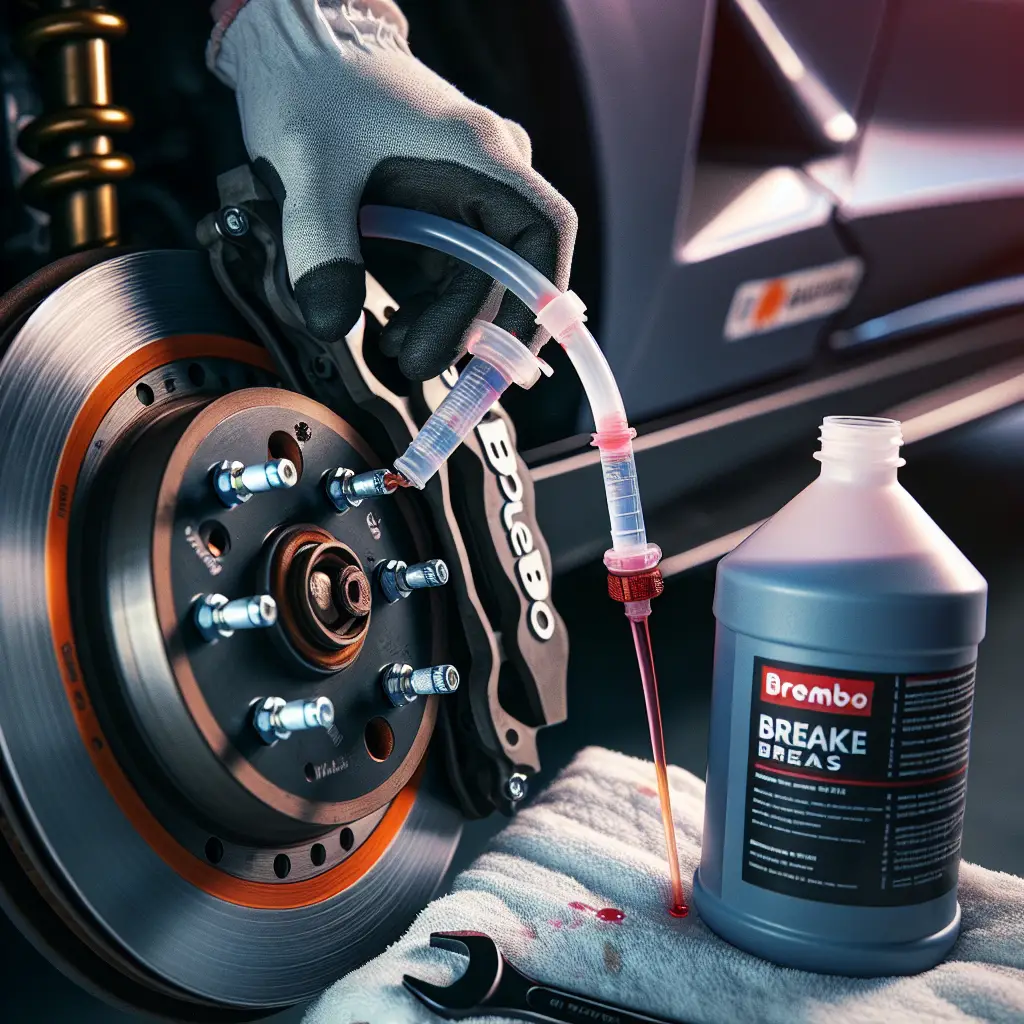How To Bleed Brembo Brakes: A DIY Guide for Optimal Performance
Brake maintenance is not only crucial for safety but also for maintaining the performance of your vehicle, particularly if you enjoy spirited driving or track days. Brembo brakes, a leading brand in brake technology, require proper care to function at their peak. In this guide, we’ll walk you through the steps of bleeding Brembo brakes, a process that can help ensure your braking system is free of air pockets and performing optimally.
Understanding the Importance of Brake Bleeding
Brake bleeding is a maintenance task that should not be overlooked. Over time, air can enter the brake system through various means, such as a leak or during a brake pad or fluid change. This air can be detrimental to your braking performance because, unlike brake fluid, air is compressible. When you press the brake pedal, the force should be transmitted to the brake pads; air in the system can diminish this force and lead to a spongy brake pedal feel, reducing your control and increasing stopping distances.
When to Bleed Your Brakes
You should consider bleeding your brakes if:
- You have undertaken a brake pad replacement
- The brake fluid has been changed or topped off
- You notice a spongy or soft brake pedal
- There has been a decrease in braking performance
- The brake fluid is discolored or contaminated
Before proceeding with the bleeding process, check that you have the necessary tools for the job. Here is a checklist to help you prepare:
Tools and Materials Needed:
- Brembo-specific brake bleeder kit or compatible tools
- High-quality brake fluid, ensure it meets the specifications for your vehicle (Brembo recommends DOT 4 brake fluid for its systems)
- A clear tube that fits the nozzle on the bleeder valve
- A wrench set, typically including an 8mm to 10mm wrench
- A brake fluid catch container
- Protective gloves and eyewear
- A helper to assist with the pedal pumping
Step-by-Step Guide to Bleeding Brembo Brakes
Step 1: Prepare Your Vehicle
Firstly, ensure your car is securely on jack stands and that the wheels are removed for easy access to the brake calipers. Check the Brembo brake setup specific to your vehicle to locate the bleed screws.
Step 2: Check Brake Fluid Reservoir
Before you start bleeding the brakes, check the brake fluid level in the reservoir and top it off if necessary. It’s crucial not to let the reservoir empty during the bleeding process, as this can introduce more air into the system.
Step 3: Starting with the Correct Brake
For a typical vehicle, you should start with the brake furthest from the master cylinder, usually the rear passenger side, and then move to the next furthest (rear driver side), followed by the front passenger side, and ending with the front driver side brake.
Step 4: Connect the Bleeder Tube
Attach one end of the clear tube to the bleeder valve and the other end into a catch container partially filled with brake fluid to prevent air from coming back up the tube.
Step 5: Bleed The Brake Caliper
Ask the helper to press down on the brake pedal to build pressure. While they’re holding the pedal down, use a wrench to open the bleeder valve slightly, allowing fluid (and any air) to flow into the catch container. Once the fluid stops flowing out, tighten the valve back up before your helper releases the brake pedal. Repeat this process until no more air bubbles are seen coming out, then move on to the next wheel.
Step 6: Monitor Brake Fluid Levels
Regularly monitor and top off the brake fluid in the reservoir to prevent air from being drawn into the system. Neglecting this can lead to added work and reduced brake performance.
Step 7: Test Brakes
Once all the brakes have been bled, ask your helper to pump the brakes to build pressure. The brake pedal should now feel firm, not spongy. If it’s still spongy, there may still be air in the system, and you may need to repeat the bleeding process.
Step 8: Dispose of Old Brake Fluid
Brake fluid is hazardous, and you should dispose of it properly. Most local recycling centers will accept brake fluid, or you could inquire with auto repair shops about disposal guidelines.
Professional Help and Resources
If you’re not comfortable performing this maintenance task yourself, The National Institute for Automotive Service Excellence recommends seeking a certified mechanic for professional help. Additionally, refer to the Car Care Council for more information on vehicle maintenance and care.
Key Points to Remember
- Always use the correct type of brake fluid for your Brembo braking system.
- Never let the brake fluid reservoir empty during the bleeding process.
- Follow the specific bleeding sequence for your vehicle.
- Dispose of old brake fluid responsibly.
Bleeding your Brembo brakes can seem daunting at first, but with the right tools and a bit of patience, it’s a manageable task for a determined DIY enthusiast. Regular brake maintenance will not only enhance your safety but also ensure your vehicle delivers the performance you expect from a premium brake system like Brembo. Remember, if at any point you feel unsure, consult a professional mechanic. Your brakes are critical, and it’s always better to be safe than sorry.
We hope this guide has been informative and helped you understand the process of bleeding Brembo brakes effectively. Stay tuned for more automotive tips to keep your vehicle running smoothly and safely.

